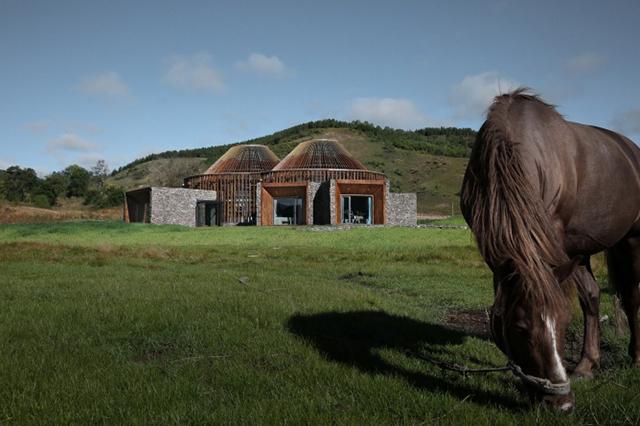不定式用主动形式表示被动:不定式怎么就主动表示被动了
今天重点梳理一下在不定式to do的使用过程中,同学们容易傻傻分不清的用主动还是用被动的情况。
一般来说,不定式的主动形式,就是to do. 比如:I want to play basketball. 这个to do就是主动,这个道理很简单,因为to do不定式,作为非谓语动词,依然保留了“它祖上”谓语动词的痕迹,即后面可以加一个宾语。后面都加宾语了,自然要用主动语态了。当然,这个很容易,不是本文讨论的范围。
二般来说,不定式的被动形式,就是to be done. 比如The book is said to be translated into English. 主语是书,与translate之间是被动关系。书将要被翻译,因此用被动。或者He never expected the bicycle to be found. 这里的自行车与寻找之间,就是被动。这是宾语和宾语补足语之间的故事,to be done是宾语,与宾语是被动,也不用主动语态。这两个例子都容易,也不是本文讨论的范围。

本文要讨论的,就是你觉得明明应该是不定式的被动语态,结果却用了主动语态的使用场景。如下:
一. 动宾结构中的to do与to be done1. 主谓宾(宾语有不定式做后置定语)
如果句子主干是动宾结构, 而不定式做宾语的后置定语,此时不定式与宾语构成一种逻辑上的主谓关系,那么用主动不用被动。
比如:I have a meeting to attend. ( I attend a meeting)
比如:I have some food to eat. ( I eat some food)
比如:We have many difficulties to overcome. (We overcome many difficulties.)
比如:I have something to say. ( I say something)
总结:此时,整个句子的主语可以新句子的主语,不定式可以处理成谓语,而原来的宾语还是宾语。这样的句子结构,一定不用to be done.
2. 主谓双宾(宾语有不定式做后置定语)
如果句子有双宾,不定式修饰直宾,不定式与直宾之间仍然构成逻辑上的主谓关系,那么用主动不用被动。
比如:He gave me some books to read. (I read some books)
比如:I will show you the right path to take. (You take the path.)
总结:这类句子不太多,没有太多好例句。
注意(只能用被动):以上两种动宾结构用主动,最根本的原因是不定式与宾语也构成动宾关系。但如果不能构成动宾关系,那就用被动。
比如:I will go to New York. Do you have anything to be taken to your friend? 这里的take就用了被动语态。因为他不能转化成you take anything.根据语义,主语you不去纽约,而是作者去纽约,即take这个动作,不可能有you发出,因此不能用不定式的主动语态,只能用被动语态。
比如:I have no letter to be typed. Thank you all the same. 这里的letter不是被主语I 所type的,根据意思type的动作是第二句的you发出的。因此这个句子不能改成I type the letter.因此不能用不定式的主动语态,只能用被动语态。
比如:My boss asks the project to be finished in two weeks. 这里的project不是主语My boss去做,根据逻辑关系,是让我去做。因此这个句子不能改成My boss finishes the project.因此不能用不定式的主动语态,只能用被动语态。
3. 主谓宾 形容词宾补 不定式
这种结构中宾语与不定式之间,有一个宾补。而宾语基本都是形容词。这种结构跟下文的系表结构其实道理是一样的。
I found him easy to get along with. (get along with him)
They don't think the game interesting to play. (play the game)
I find the lecture difficult to understand. (understand the lecture)
注意(主被动都行):有一种情况,主被动都可以使用,但表达的含义不同。
比如Do you have some clothes to wash? 这句用主动,意思是you去洗衣服。整个句子问的是,你是不是要去自己个洗衣服去?可能暗示:你要是去的话,咱俩一块去。
Do you have some clothes to be washed? 这句用被动,意思是you有没有脏衣服。整个句子问的是,脏衣服,你有没有?可能暗示:你要是有的话,我给你洗,为你干啥,我都愿意。

1. 形容词做表语 to do
这时的主语不是我们常见的it形式主语,而是具体的人或物。而表语是形容词,不是名词适用于此句型的形容词有:Difficult, easy, comfortable, hard, pleasant, interesting, nice, important等。
比如:The question is very difficult to answer. (answer the question)
比如:The problem is difficult to deal with. (deal with the problem)
比如:He is a man easy to get on with. (get on with the man)
比如:these apples are good to eat. (eat apples)
比如:The river is dangerous to swim in. (swim in the river)
比如:The room is comfortable to live in. (live in the room)
比如:The problem is difficult to work out. (work out the problem)
总结:这个句型需要满足的条件是系表结构,主语都可以转变成逻辑上不定式的宾语。
2. 名词做表语 to do
同上一个小点一样,不是我们常见的it形式主语,而是具体的人或物。表语是名词,不是形容词。
This is a difficult question to answer. (answer the question)
It is an easy job to do. (do the job)
This is the best book (for me) to read. (read the book)
3. Too ... to结构
这种结构是初中学生学习的重点,因此不难掌握。
比如:I was too excited to say a word. (这一句容易,因为to say后已经有了宾语word因此一定用主动)
比如:The passage is too hard to translate. (translate the passage)
比如:The box is too heavy for the boy to carry. (carry the box)
比如:The box is too heavy to move.(move the box)
比如:The ice is too think to skate on.(skate on the ice)
比如:The books seemed too heavy to carry.(carry the books)
4. Enough句型
本身这种句型结构跟too...to就是相互替换的。
He is not old enough to go to school. (这个句子很容易,因为he 与go to school本来也是主动)
The box is light enough to carry. 不用to be carried
The river water is warm enough to swim in. 不用to be swum in
三. There be结构 不定式
在"there be 主语 +不定式"的结构中,当不定式与主语之间在逻辑上有动宾关系时,不定式可以用主动式也可以用被动式,只是侧重点不同。
用主动式作定语重点在人,用被动式作定语重点在物,但在口语中多用主动式表被动的含义。
比如:There is a lot of work to finish. 强调我们要去完成工作,强调我们。
比如:There is a lot of work to be finished. 强调有很多任务,强调这个量大,不强调谁去做。
比如:There is no time to lose. 强调我们不能再浪费时间了,强调我们。
比如:There is no time to be lost. 强调不能再浪费时间了,强调时间宝贵。
比如:There is nothing to do now.(= We have nothing to do now.)现在没事干,空有力气。
比如:There is nothing to be done.(= We can do nothing now.)现在没办法了,黔驴技穷。
比如:There is nothing to see. (nothing is worth seeing)没有东西值得看,跟心态有关。
比如:There is nothing to be seen. (nothing there at all) 看不见什么东西,跟视力有关。

疑问词 to do = 疑问词 sb do
比如:I don't know what to do next.
比如:She will tell you which bus to take.
比如:Do you know who to go with?
五. With 不定式
高中英语中,我们学过with 宾语 6种宾语补足语。三种非谓语动词是to do , done, doing没有to be done.因此与with搭配的不定式,都是主动,没有被动。
比如:With so much work to do, I can't go out with you.
六. 固定句型 不定式
to let, to blame, to seek等用不定形式主动表示被动含义。
比如:The house is to let. (to let的意思是出租)
比如:Who is to blame for it? (blame就是to blame主动即可)
比如:The reason is not far to seek. (seek的这个结构,解释可以参考系表结构第1条)
我是王老师,头条号、抖音号、西瓜号都是:英语老师刚刚好,欢迎大家关注。如有不同理解,请留言,我们进一步探讨。
码字不容易,按逻辑有条理整理出来更难,请搬运的朋友注明出处,谢谢。
,免责声明:本文仅代表文章作者的个人观点,与本站无关。其原创性、真实性以及文中陈述文字和内容未经本站证实,对本文以及其中全部或者部分内容文字的真实性、完整性和原创性本站不作任何保证或承诺,请读者仅作参考,并自行核实相关内容。文章投诉邮箱:anhduc.ph@yahoo.com






